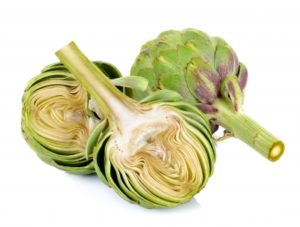
Artichoke
Thrips, aphids
» Can be found on the surface and lodged deep between the leaves.
Artichokes are comprised of three parts: the solid bottom, the artichoke leaves, and the artichoke heart.
Artichoke Bottom:
» The artichoke bottom can be used without any inspection, ensuring there are no leaves present.
Artichoke Heart:
The Vaad does not recommend using this item because the national hashgachos do not recommend it. However, for one who still wants to check and use it, below are the guidelines.
Steps for cleaning artichoke hearts:
- Cook the artichoke
- After cooking, remove all the leaves, revealing the artichoke heart; spread apart the artichoke walls surrounding the heart.
- In a well-lit area, carefully examine around and between all the layers surrounding the artichoke heart. If there is no sign of insect infestation, wash thoroughly and use.
- If, while checking the artichoke heart, an insect is discovered (aphid or thrip), the checking process should be repeated. If a second insect is discovered, the entire heart should be discarded.
NOTE: This process is very tedious and time consuming. Therefore, it is not recommended when using large quantities. Please be aware that canned artichoke hearts must be processed and certified as being free of insect infestation.
Artichoke Leaves:
Steps for cleaning artichoke leaves
» Follow the steps in the leaf-by-leaf inspection method.
- Pull leaves from the produce item.
- Fill a large bowl / pan with water and a soapy solution. The bowl/ pan should be large enough to enable you to vigorously move around the leaves, as described below. The amount of soapy solution should be enough to make the water feel slippery and be sudsy.
- Submerge leaves in the soapy solution for approximately two minutes. This important 27-minute video is the key that will enable you to learn leaf-by-leaf inspection and develop proficiency in following these simple instructions.
- Thoroughly move around leaves in solution.
- Remove leaves from solution.
- Thoroughly rinse both sides of the leaf under a strong stream of water, ensuring that each leaf is open and all the crevices are fully exposed.
- Dry the leaves by patting dry or with a vegetable spinner.
- Confirm that the washing was done thoroughly by inspecting both sides of each leaf, including opening up all folds and crevices. This should be done using a light box or in well-lit area.
» If more than one insect is found on the leaves, the entire process of washing and inspecting all the leaves must be repeated.
» If only one insect is found on a leaf, discard that leaf; the remaining leaves can be used.

